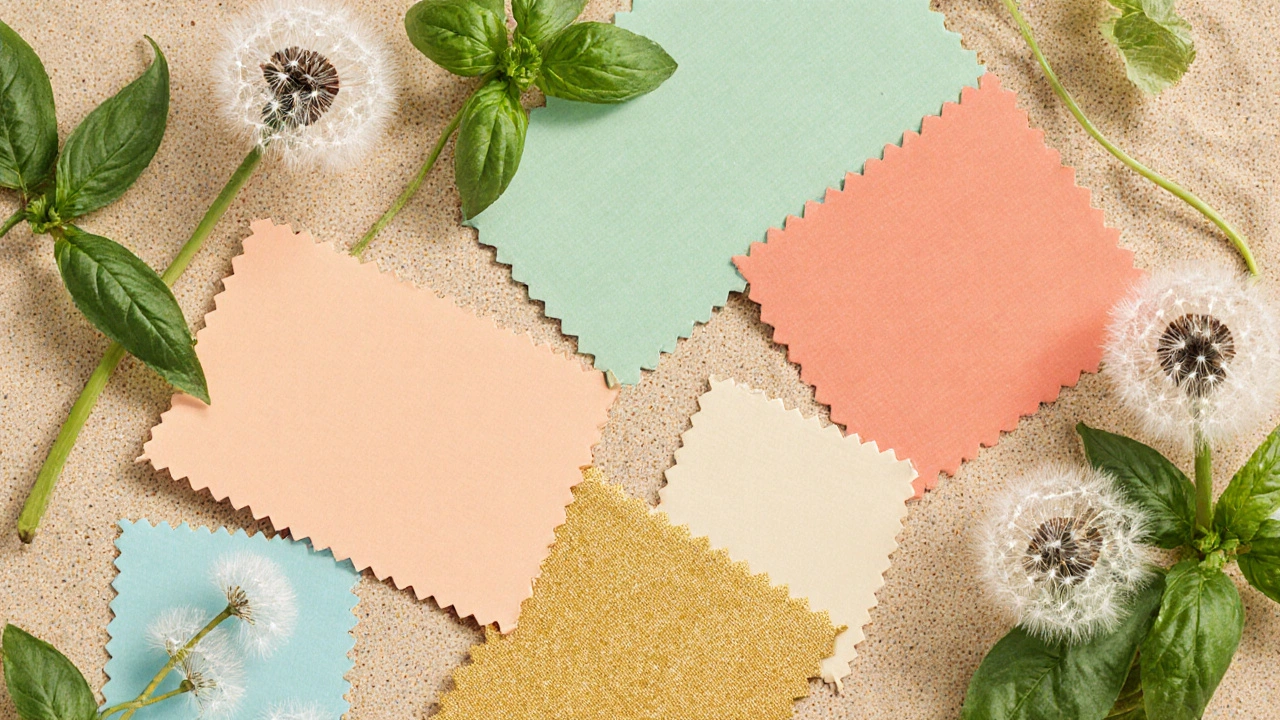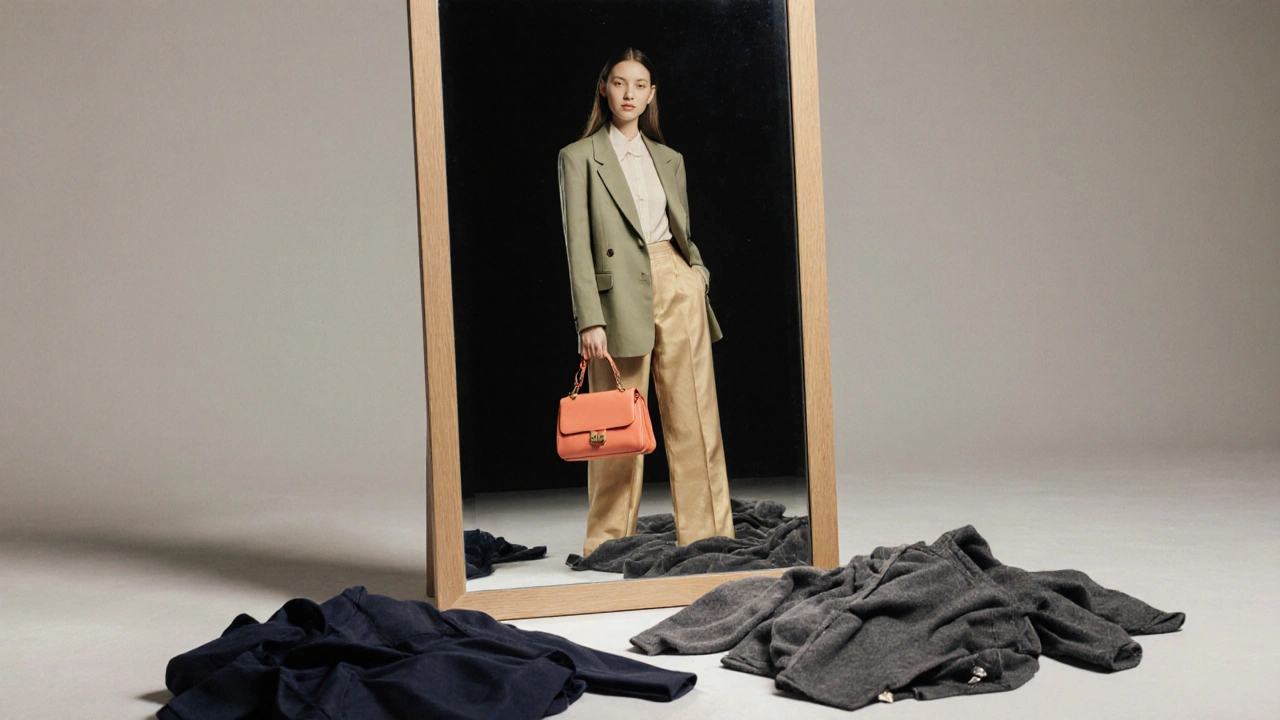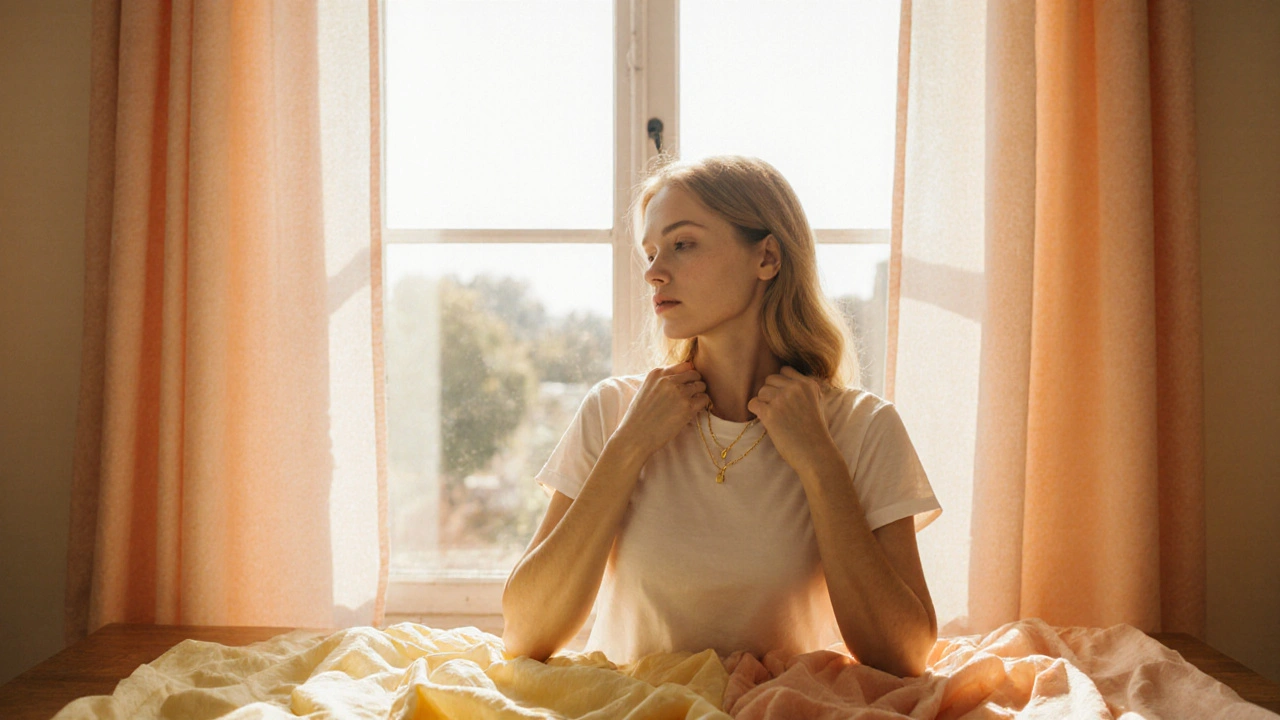If you’ve ever bought a shirt that looked great on the hanger but washed you out in natural light, you’re not alone. Many people spend thousands on clothes that don’t flatter their skin tone because they don’t know their spring color type. The good news? Figuring it out doesn’t require a professional consultant or expensive tools. With just a mirror, natural daylight, and a few simple tests, you can unlock a wardrobe that makes you look brighter, more energized, and effortlessly put together.
What Is Spring Color Type?
Spring is one of the four seasonal color types in color analysis. It’s designed for people with warm undertones and light to medium skin depth. Think golden peach, honey, or light tan skin-not pale, not deep. Your veins might look greenish, not blue. You tan easily and rarely burn. Your eyes are often light brown, hazel, amber, or clear green. Hair ranges from golden blonde to strawberry blonde, light auburn, or warm honey brown.
Spring types don’t look good in cool, muted, or overly dark colors. Avoid charcoal gray, navy, icy pastels, or anything with blue or purple undertones. These drain your natural warmth and make your skin look dull or sallow. Instead, you thrive in colors that mirror the first days of spring: fresh, clear, and gently saturated.
How to Test for Spring Color Type
You don’t need a color chart to start. Here’s how to test yourself at home:
- Wear a white t-shirt and sit near a window with natural daylight. No artificial lights. No makeup.
- Hold a piece of gold jewelry against your neck and then a piece of silver. Notice which one makes your skin glow and your eyes pop. Gold usually wins for spring types.
- Place a white sheet of paper next to your face. If your skin looks yellowish or peachy next to it, you likely have warm undertones. If it looks pink or blue, you’re probably not a spring.
- Try on a coral shirt and a lavender shirt. One will make you look alive. The other will make you look tired. The one that makes you look refreshed? That’s your season.
Many spring types mistake themselves for summers because they have light skin. But summer colors are cool and muted. Spring colors are warm and bright. That’s the difference.
The Spring Color Palette: What Works
Here’s what actually looks good on spring types-not theory, not trends, but real, tested colors:
- Soft Peach - Not orange, not pink. A gentle, creamy peach that mirrors morning light.
- Butter Yellow - Not neon. Think dandelion, not caution tape.
- Light Coral - A touch of pink mixed with orange. Avoid blue-based pinks.
- Warm Mint - A yellow-green, not a blue-green. Think new leaves, not icy spa water.
- Light Aquamarine - A clear, warm blue-green. Not navy, not teal.
- Golden Beige - Not gray-beige. It should have a hint of gold, like sun-kissed sand.
- Warm Rose - A blush with golden undertones, not cool berry.
- Light Olive - Not muddy. Think fresh basil, not forest floor.
These colors don’t just look good-they make your skin look healthier, your eyes more vivid, and your whole face more radiant. That’s because they match your natural coloring. When your clothes match your undertones, your skin reflects light the same way the sun does on spring morning.
What to Avoid
These colors will make you look washed out, tired, or even sick:
- Black - Too harsh. It kills your warmth.
- Charcoal Gray - Cool and flat. Drains energy.
- True Navy - Too deep and cool. Try a warm navy instead, if you must.
- Cool Pastels - Ice blue, lavender, baby pink. They have blue undertones that clash.
- Neon Colors - Too intense. Spring colors are soft and natural, not electric.
- Plum and Burgundy - Too dark and purple-based. They make warm skin look sallow.
Even if you love a color, if it’s on this list, it’s not your season. That doesn’t mean you can’t wear it occasionally-but don’t build your wardrobe around it. You’ll notice you look more tired by the end of the day.

How to Use Your Palette in Real Life
Knowing your colors is useless if you don’t use them. Here’s how to start:
- Go through your closet. Pull out everything you’ve worn in the last six months. Lay it out. Which colors made you feel confident? Which ones made you avoid mirrors?
- Keep only the pieces that match your spring palette. Donate or sell the rest. You’ll be surprised how many items you never wore.
- When shopping, hold fabric against your neck-not your hand. Your neck is the most accurate indicator of how color affects your face.
- Use your spring palette as a filter. If a color doesn’t match one of the approved tones, skip it. Don’t talk yourself into it.
- Start small. Buy one new top in soft peach or warm mint. Wear it for a week. Notice how people respond. Notice how you feel.
Spring types often feel like they have to choose between neutral basics and bold statement pieces. But your palette isn’t that extreme. It’s soft, wearable, and endlessly mixable. A light aquamarine blouse pairs beautifully with golden beige pants. A butter yellow sweater looks great with warm rose leggings. You don’t need to be flashy to look put together.
Common Mistakes Spring Types Make
Even after learning their palette, people keep making the same errors:
- Wearing beige that’s too gray. True spring beige has gold in it. If it looks like concrete, it’s wrong.
- Choosing “nude” makeup that’s too pink or too gray. Your nude should be a warm peach or light caramel.
- Thinking all light colors are good. Ice blue and lavender may be light, but they’re cool. They’ll make you look pale.
- Buying “spring” colors from fast fashion brands that use synthetic dyes. Many are too bright or too dull. Look for natural fabrics like cotton, linen, silk.
- Ignoring accessories. Your scarf, bag, or earrings should match your palette too. A coral handbag can make an entire outfit come alive.
Real-Life Examples
Take someone with light skin, golden blonde hair, and hazel eyes. She buys a navy blazer because it’s “classic.” It makes her look tired. She swaps it for a light olive blazer. Suddenly, her eyes look brighter, her skin glows, and strangers compliment her. That’s the power of seasonal color.
Another person with light tan skin and strawberry blonde hair wears bright coral lipstick every day. It looks perfect. But she buys a cool rose blush because it’s “trendy.” It makes her look sick. She switches to a warm peach blush. Her whole face looks healthier, even without makeup.
These aren’t magic tricks. They’re science. Your skin reflects certain wavelengths of light. When your clothes reflect the same wavelengths, your face looks more balanced.

Where to Shop for Spring Colors
You don’t need to buy from expensive brands. Look for:
- Brands that use natural dyes (like Pact, Eileen Fisher, or Thought Clothing)
- Seasonal collections labeled “soft,” “warm,” or “earthy”
- Local boutiques with hand-dyed pieces
- Online filters: search for “warm beige,” “coral,” “golden yellow,” “light olive”
Avoid stores that only carry black, white, gray, and navy. They’re designed for cool-toned people. Your season needs warmth.
Why This Matters Beyond Fashion
Color typing isn’t just about clothes. It’s about confidence. When you wear colors that match your natural tone, you look more rested, more alert, and more like yourself. People respond to you differently. You feel more at ease in photos. You stop second-guessing your choices.
It’s also sustainable. When you know what works, you buy less. You wear what you own longer. You stop chasing trends that don’t suit you. That’s real style.
Next Steps
Start today. Grab a white sheet, hold gold next to your neck, and look in the mirror. What changes? Then pick one item from your closet and swap it for a spring color. Notice the difference. That’s your starting point.
You don’t need a $300 color analysis. You just need to pay attention.
How do I know if I’m a Spring or a Summer?
Spring types have warm undertones and bright, clear colors. Summer types have cool undertones and muted, soft colors. If you look better in gold than silver, tan easily, and avoid icy pastels, you’re likely a Spring. If you look better in silver, burn easily, and prefer lavender or dusty blue, you’re likely a Summer.
Can I wear black if I’m a Spring?
Black is not ideal for Spring types because it’s too harsh and drains your warmth. If you must wear black, pair it with a warm color like coral or golden beige to balance it. Avoid all-black outfits. Instead, opt for dark olive, warm brown, or soft charcoal.
What’s the best foundation shade for Spring skin?
Look for shades labeled “warm,” “golden,” or “beige.” Avoid shades with pink or blue undertones. Brands like NARS Sheer Glow or Fenty Beauty’s Match Stix in “Caramel” or “Amber” often work well. Test on your jawline in daylight-not your wrist.
Do Spring colors work for all hair colors?
Yes, as long as your undertones are warm and your skin is light to medium. Golden blonde, strawberry blonde, light auburn, and honey brown all work. Even darker warm brown hair can be Spring if the undertones are golden, not ashy. It’s about skin tone, not hair.
Can I wear jewel tones as a Spring?
Only if they’re warm. Avoid cool jewel tones like sapphire blue, emerald green, or amethyst purple. Warm jewel tones like topaz, amber, or peachy coral can work-but keep them light and soft. Avoid deep, saturated versions. Spring colors are bright, not dark.


Write a comment